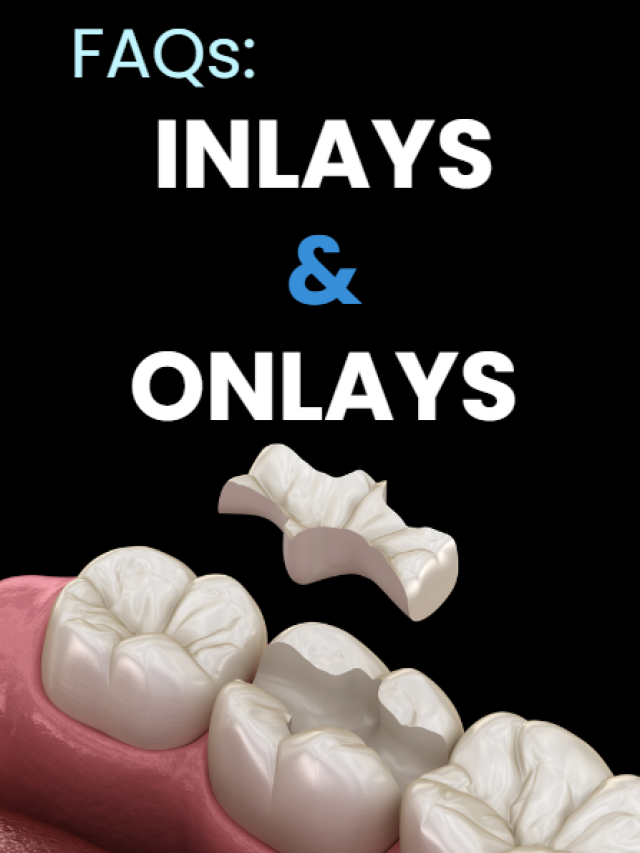GentleWave® Procedure: Specialty care meets cutting-edge tech to support optimal, painless root canal therapy
Patients in Beverly Hills, California, and beyond benefit from the advanced training and considerable focused experience of specialists Drs. Frank Vidjak and Fanny Yacaman. In addition to exceptional expertise, a specialty office distinguishes itself from other dentist practices with investments in cutting-edge, clinically-proven effective, and safe technologies and treatments.
Root canal therapy at Beverly Hills Advanced Specialties of Dentistry
A world-renowned endodontist, Dr. Yacaman is sought after for her skill in preserving teeth with endodontic procedures, including non-surgical root canal therapy. The GentleWave® procedure complements Dr. Yacaman’s extensive talents in resolving severe damage to the innermost tooth structure.
True to its name, GentleWave® promotes the most gentle, non-invasive, painless, and precise experience at every stage of the treatment process. The techniques that add to this unique procedure have largely eliminated many persistent concerns associated with “standard” RCT.
Our valued patients appreciate that the GentleWave® approach to RCT is:
- Less invasive
- Preserves maximum healthy tooth structure
- Supports early and natural healing
- Effectively cleans the inflamed or infected root canals
- Associated with full healing
- Avoids the need for retreatment or further endodontic procedures
- Well-tolerated, even a relaxing treatment
- Fast – can be completed in minutes
- A “one and done” process (no follow-up visits required)
GentleWave® procedure uses a technologically advanced system to deliver optimized fluids. These therapeutic fluids are distributed throughout the root canal system. This approach helps to prevent too much of the tooth structure from being removed while protecting healthy function and the natural structural integrity of the tooth.
Furthermore, this approach to delivering fluids provides an ideal way to remove infection and effectively clean the root canals. The risk of lingering infection or damage being left behind is substantially minimized. All GentleWave® patients need is a single treatment. As long as they maintain good hygiene at home and routine professional care, their treated teeth remain healthy and require no further treatment.
Following the expert GentleWave® Procedure, patients also benefit from the skill of prosthodontist Dr. Vidjak. He can help retain the tooth’s strength and protect its sustained health by preparing, designing, and placing an esthetically-pleasing and durable dental restoration, such as a crown.
For more information about the GentleWave® procedure, call (310) 861-3955. You may also request an appointment, at your convenience, from this website.
Frequently asked questions
When the tooth’s interior gets infected, the pulp within the inner section of the tooth must be removed.
The root canal procedure is no more painful than a regular filling. This procedure helps to alleviate the excruciating pain associated with an infected tooth. The surrounding region will be numbed during the treatment, providing you with a pain-free experience.
The GentleWave® process is a less invasive alternative to traditional root canal therapy. This method is less invasive, retains as much good dental structure as possible, is a one-and-done procedure, and promotes early and spontaneous recovery.
Eliminating the inner part of the tooth weakens the tooth’s overall structure. Nevertheless, it can be strengthened with dental restorations such as an onlay or a dental crown.
Once the numbing agent wears off, you will not experience the same discomfort as before the root canal. The inner nerves have been eliminated, providing you with relief. Most individuals notice the region is sore for a few days as the surrounding tissues recover. Eating soft meals and using over-the-counter pain medicine might be beneficial during the healing period.
Related videos

Experience pain-free root canal treatment with a skilled endodontist.
Root canal therapy is a very common procedure. It has a reputation of being undesirable and painful but when done properly it is actually painless. Every tooth in your mouth is composed of a crown and a root. When a cavity or bacteria penetrates the tooth the root and its nerves become irritated. As a result the bacteria within the pulp cavity needs to be removed and cleaned in order to restore the tooth to its healthy state. Following the procedure the tooth is fragile and is consequently restored to a natural crown for a lifetime of durability. Root canals have a success rate of 95 percent or greater. Most root canals are diagnosed by patient’s sensitivities to a specific tooth. Be sure to consult your dentist if any symptoms or discomfort.

A clear and concise explanation of everything you wanted to know about root canal treatments.
A root canal treatment has to be performed if the dental nerve technically called the dental pulp from the Latin Pulpa has died or is infected. The patient may or may not experience pain after pulp death. Some causes of pulp death include deep-seated caries, severe heat generation during tooth cutting, severe periodontitis or possibly chemicals used by the dentist for example white fillings called composites. The dead tooth can lead to acute even life-threatening complications at any time because the necrotic pulp tissue can cause acute infections called abscesses. The tooth is connected to the bone through numerous small canals at the end of the root. The objective of a root canal treatment is to completely remove the destroyed tissue which may also be infected with bacteria in some cases from the interior of a tooth. This way the infection is prevented from spreading to the bone. Since complete cleaning of the interior of a tooth is never 100% successful, the dentist attempts to close the pulp cavity in the root canals tightly with a special compound so that any remaining bacteria don’t have space to multiply. This means that absolute cleanliness and the sterile working environment are prerequisites for any root canal treatment. In order to create this environment in the oral cavity, it’s imperative that the dentist works with a rubber dam, because that’s the only way to prevent saliva from reaching the interior of a tooth. Saliva contains many different bacteria that can endanger the success of a root canal treatment. Furthermore, it’s important to work with sterile instruments. With the aid of sterile instruments, the dentist begins to clear and clean the interior of the tooth. Special solutions are used intermittently for irrigation in order to flush out tooth chips cell debris and bacteria. It’s important that all canals are reconditioned. Most teeth have several canals therefore a root canal specialist a so-called endodontic specialist always works with magnification, such as medical magnifying glasses or a microscope. The dental canal must be reconditioned all the way to the root apex. The length of the root is ascertained by means of x-rays and measuring aids. Only a well-conditioned tooth filled all the way to the root apex can be preserved permanently. If the tooth exudes a foul smell is painful or bleeds severely from within the canal should not be filled with the permanent material. In such cases medication is applied within the canal which is then tightly sealed for a few days. However, the temporary sealing material must be absolutely saliva proof because only then will it keep the tooth sealed for about one week. Another cleaning session must take place no longer than a week after the initial session. If this is not done bacteria from the saliva could enter the tooth and its canals necessitating a repeat of the entire previous procedure. Once the canals are clean and the tooth no longer causes any discomfort, the canals are tightly filled with a special compound creating a tight apical seal. The tooth crown should also be tightly sealed from the top in effect from the access opening because only then is it guaranteed that bacteria can no longer enter. On this x-ray of a tooth, you can see a good root canal treatment. The canals have been filled homogeneously and tightly down to the root apex. These filled canals are represented on the x-ray as a light strip within the interior of the tooth. Such a tooth is able to provide valuable service for an entire lifetime. Now we see an example of a tooth with a poorly performed root canal. The anterior root is not filled at all while the posterior root is only half filled. Such teeth can cause trouble even after many years and can lead to conditions like acute bone infection or abscesses. In this case a revision of the root canal treatment and/or tooth extraction becomes necessary. The only alternative to a root canal treatment is tooth extraction prevention is the best alternative. The risks involved in a root canal treatment include the following. Instrument breakage in the canal root canals overlooked by the dentist who leaves them unfilled perforation of the canal and the dental crown and over instrumentation with respective possible consequences such as maxillary sinusitis or bone inflammation.

Nothing beats a natural tooth. Here’s a step-by-step guide to a root canal procedure that can save natural teeth.
Nothing looks feels or functions like your natural teeth, and with the right care, your smile can last a lifetime, but problems like decay disease or injury can threaten teeth and ruin smiles. Thanks to advances in treatment and technology, many teeth can be saved. One way a tooth can be saved is with a procedure called root canal treatment, also known as endodontic treatment. Endodontics is a specialized area of Dentistry focused on treating disease or injury to the dental pulp, endodontists are dental specialists with advanced training in root canal treatment. They are experts in saving your natural teeth using state-of-the-art technologies, like microscopes and digital imaging to treat you quickly and comfortably. Let’s take a step by step look at a modern root canal procedure. Here is a healthy tooth. Inside the tooth under the white enamel is a hard tissue called dentin. Inside the dentin is a soft tissue called pulp. The pulp contains the tooths nerves and blood vessels. It extends from the crown of the tooth into the roots of your teeth. If the pulp becomes inflamed or infected your endodontist will remove it relieving your pain or discomfort. Here’s how root canal treatment works. First your endodontist will numb the tooth so that you won’t feel anything during the procedure. A small shield isolates the tooth keeping it dry and clean. An opening is made through the crown of the tooth and into the pulp chamber fluid is put in the canals to kill any bacteria and help rinse out debris. Then the pulp is removed. Using small instruments, the endodontist carefully cleans and shapes the canals. After the space is cleaned and shaped, the endodontist fills and seals the root canals in most cases a temporary filling is placed to close the opening until you see your dentist. After your endodontist is finished, you must return to your dentist to have your tooth properly restored with a filling or crown. That protects the tooth and is important to ensure the success of your root canal treatment. A tooth that has had root canal treatment often lasts a lifetime, so you keep smiling with confidence.

Where precision and comfort meet expert Oral Care: this is GentleWave®
I would describe the GentleWave® procedure kind of life saving. There was no follow up appointment, and just the procedure itself and knowing more about it and what it’s doing to my teeth.
Amazing, Very beyond expectations for me. Truthfully, talking with friends about their experience with a root canal, I had to shut it down. Since I’ve been using GentleWave® since 2020, I have seen how much GentleWave has brought into the quality of care I provide for my patients. I tried to keep an open mind and let technology do its job. I would describe the general wave procedure in one word, as fantastic.
There’s a vast difference between a regular procedure in a dentist’s office and using the GentleWave® here, and it had such a cooling effect where you would be like sitting on a chair and having a breeze come through and just having the noise relax you – you just kind of sit here 20 mins later and it’s all done and you don’t really realize how long you are sitting there.
I was in a lot of pain and the GentleWave procedure really just kind of gave my whole day a 180.
I would definitely recommend the procedure to someone else, needing a root canal. I actually recommended it this morning to my sister. Hello, Hello, Hello, Hello, 1 million, 1 million GentleWave® patients. Hello 1 million GentleWave patients.
The skilled doctors at our practice are Frank M. A. Vidjak, DDS, MSEd and Fanny Yacaman, DDS, MSEd, MS.





















